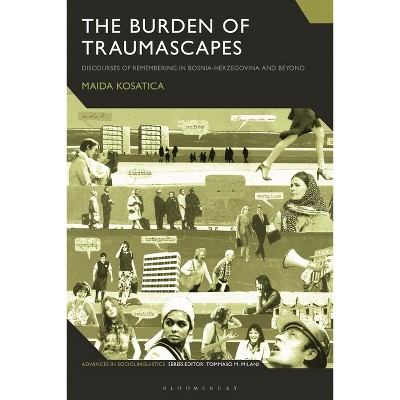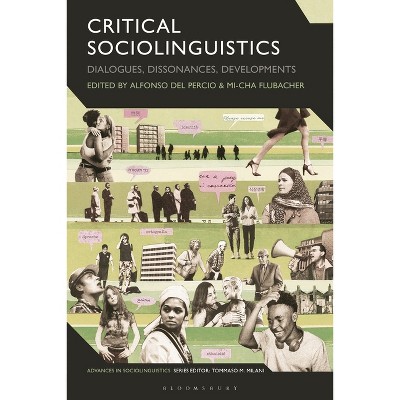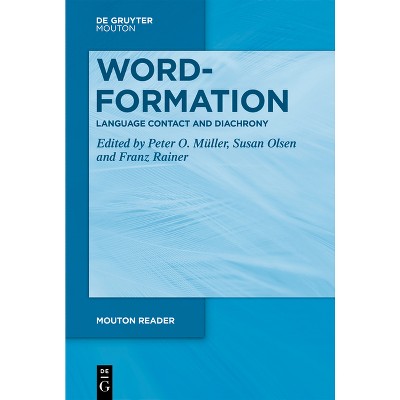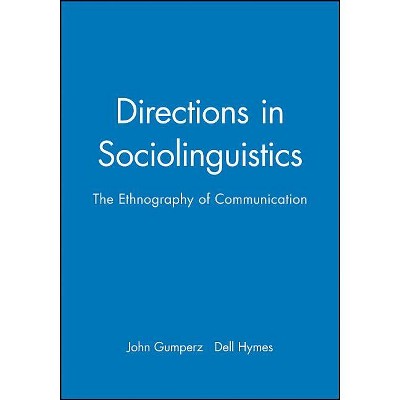The New Sociolinguistics Reader - 2nd Edition by Nikolas Coupland & Adam Jaworski (Paperback)

About this item
Highlights
- Fully updated and expanded for the second edition, this core textbook provides rigorous coverage of the key themes and debates at the cutting edge of sociolinguistics research and brings together many of the most influential scholars in the field.
- About the Author: NIKOLAS COUPLAND is Research Director of the Centre for Language and Communication Research at Cardiff University, and an elected fellow of the Academy of Social Sciences.
- 520 Pages
- Language + Art + Disciplines, Language Arts
Description
Book Synopsis
Fully updated and expanded for the second edition, this core textbook provides rigorous coverage of the key themes and debates at the cutting edge of sociolinguistics research and brings together many of the most influential scholars in the field. Comprising 6 distinctive parts and almost 50 individual chapters, it introduces students to a wealth of issues in sociolinguistics, including refashioning linguistic identities, code-switching, language rights and the social functions of small talk. Chapters are richly illustrated with examples and informed by the latest scholarly debates.
This is an essential companion for all undergraduates and postgraduates involved in the study of sociolinguistics. It will be an ideal resource for lecturers teaching modules on topics such as language variation, language and gender, language attitudes and multilingualism. New to this Edition:- Includes 25 new readings
- Features a new section on language, gender and sexuality
From the Back Cover
Why do bilingual speakers switch between their languages? Why do young English speakers say, 'I was like, 'that's insane''? How is humour used in the workplace? How are languages born and how do they die? What is gossip? How is hip-hop taken up in different parts of the world? What are people's linguistic human rights? Do ordinary people's views about language matter? These are just some of the questions asked and answered in Sociolinguistics.In this ever-changing and rapidly expanding area, new findings, perspectives and arguments are constantly emerging - on language in relation to culture, social change and social relationships. The New Sociolinguistics Reader is an up-to-date collection of the very best scholarship in the field, bringing together many of the discipline's most influential authors, with newly commissioned chapters set alongside reprints of key texts.
Divided into six distinctive sections, with helpful introductions to each, the editors point to the key themes, debates and shifts within the different perspectives of modern Sociolinguistics. With an emphasis on contemporary, critical research and cutting edge debates, this comprehensive volume complements the original Sociolinguistics Reader and provides an indispensable resource for students of language, society and culture at all levels.
About the Author
NIKOLAS COUPLAND is Research Director of the Centre for Language and Communication Research at Cardiff University, and an elected fellow of the Academy of Social Sciences. His current research is on style and performance in spoken discourse, the sociolinguistics of Wales and sociolinguistic theory.
ADAM JAWORSKI is Professor at the Centre for Language and Communication Research at Cardiff University. Adam's interests include face-to-face interaction in the age of globalisation, the sociolinguistics of tourism, media discourse, and visual and nonverbal communication.NIKOLAS COUPLAND is Research Director of the Centre for Language and Communication Research at Cardiff University, and an elected fellow of the Academy of Social Sciences. His current research is on style and performance in spoken discourse, the sociolinguistics of Wales and sociolinguistic theory. ADAM JAWORSKI is Professor at the Centre for Language and Communication Research at Cardiff University. Adam's interests include face-to-face interaction in the age of globalisation, the sociolinguistics of tourism, media discourse, and visual and nonverbal communication.











